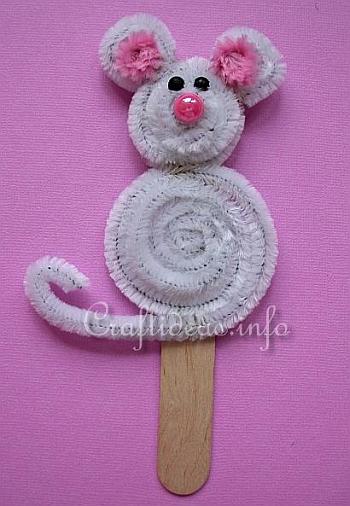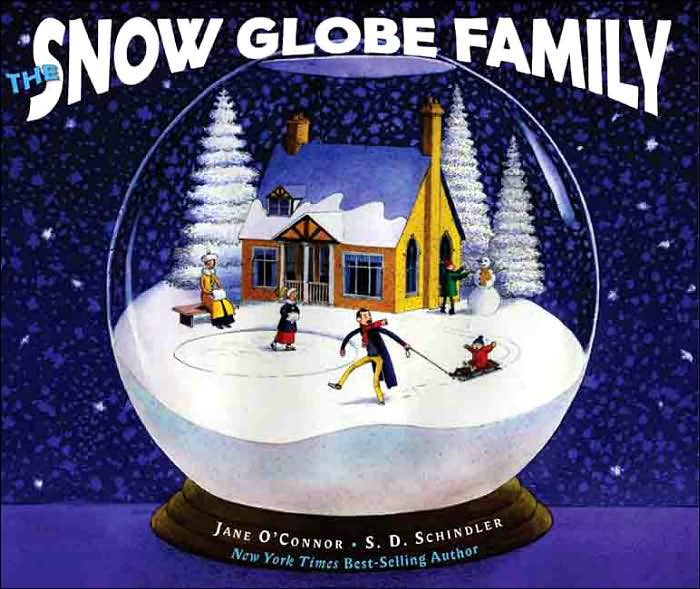 Santa Mouse is a classic Christmas book about a little mouse who decides to give Santa a gift of his most prized cheese. Santa is so touched by the little mouse's gift that he names the mouse "Santa Mouse" and lets him come along on his sleigh. The end of the book encourages children to leave a piece of cheese in the tree for Santa Mouse and in turn he leaves a small present hidden in the Christmas. This has become part of the Christmas tradition for many families. There is a second book called Santa Mouse, Where Are You? One year, I used this book with all of my clients and gave each of them a mouse ornament. Oriental Trading had some nice ones reasonably priced in bulk. Or the kids can do a craft activity making a mouse or a fake piece of cheese (hanging real cheese in a tree could become a stinky tradition, especially if the cheese falls or sticks to the tree).
Santa Mouse is a classic Christmas book about a little mouse who decides to give Santa a gift of his most prized cheese. Santa is so touched by the little mouse's gift that he names the mouse "Santa Mouse" and lets him come along on his sleigh. The end of the book encourages children to leave a piece of cheese in the tree for Santa Mouse and in turn he leaves a small present hidden in the Christmas. This has become part of the Christmas tradition for many families. There is a second book called Santa Mouse, Where Are You? One year, I used this book with all of my clients and gave each of them a mouse ornament. Oriental Trading had some nice ones reasonably priced in bulk. Or the kids can do a craft activity making a mouse or a fake piece of cheese (hanging real cheese in a tree could become a stinky tradition, especially if the cheese falls or sticks to the tree). Here is a youtube animation of the story.
This book can be used in therapy in many ways: using the story to pull our articulation targets, language goals, and extension activities.
Articulation: Obviously this is a great book for /s/ targets: Santa, Mouse, Christmas... but any sound can be targeted with a little creativity by pulling target words out of the story or using carrier phrases with the specific target.
Language:
- Vocabulary: discuss new words as they are used in the story. Example: Mouse's imaginary friends
- Concepts: Locations - Use mouse and cheese cut outs to place in various positions on a Christmas tree picture. This can be done as a receptive or expressive language activity.
- Sentence structures: Develop sentences to target whatever sentence structure to be practiced. Make a mini book for the child and glue these sentences to each page. You can also cut up the sentences and have children unscramble them.
- Verbal Expression: Re-telling the story.
- Comprehension / Inferences: Discuss whether the "friends" are real or imaginary. It is amazing that many children miss this concept or fail to fully understand it.
- Social: Discuss how the mouse feels "lonely" with no friends, how thoughtful he is to want to give Santa his cheese, how his behavior makes Santa feel happy, which results in Santa befriending him.
Crafts are always fun to do and great for working on following directions and processing information. Or, you can just use them as a motivational activity with the child earning pieces of the craft to complete it.
- DLTK is always a favorite resource for kid activities and she has many "mouse" themed activities. One of my favorites: Christmas hat template to attach to Mouse.
- DLTK's Mouse Coloring Pages
- Candy Cane Mouse

- Cheese and pom pom mouse: Cut a small triangle from a yellow sponge for the wedge of cheese.Glue a grey pom pom to the sponge for the mouse's body.Cut a nose, ears, and eyes from felt or foam, (or use wiggle eyes). Glue them in place.For the mouse's tail, cut a 2-inch strip of chenille stick or felt. Glue one end under the back of the mouse's body.
- Swiss Cheese Felt ornament:: Cut holes in yellow felt to hang on tree (instead of real cheese).
- Chenille Mouse:
- Chocolate Kiss Mouse
- Mouse in a Tin: You can simplify this craft by making a flat felt mouse to put in the tin or a matchbox.
- Paper Cone mouse
I have uploaded a couple of documents:
- Santa Mouse story (since the book is apparently out of print... but you can find used copies on Amazon and Ebay).
- Santa Mouse tradition tips.


















